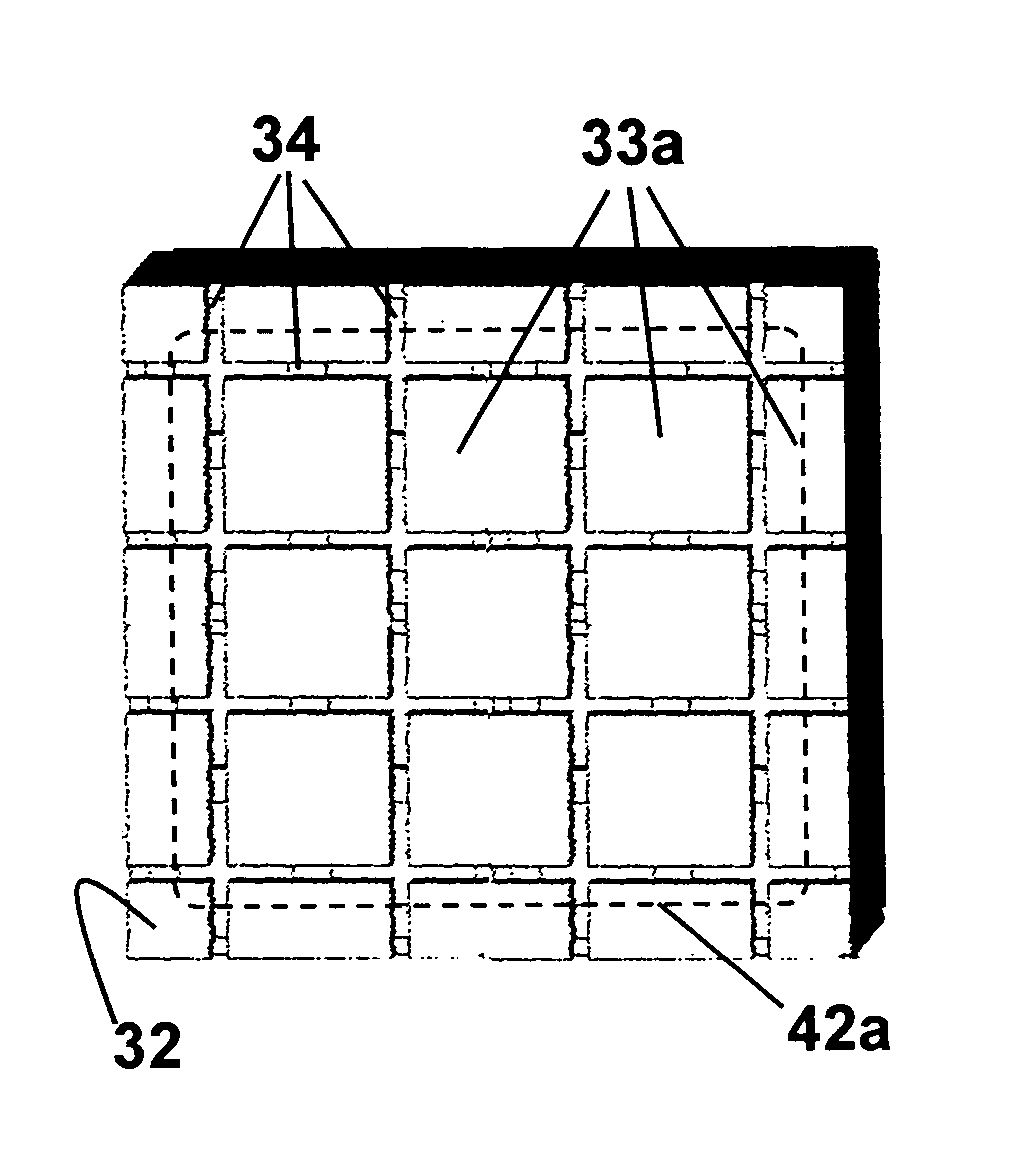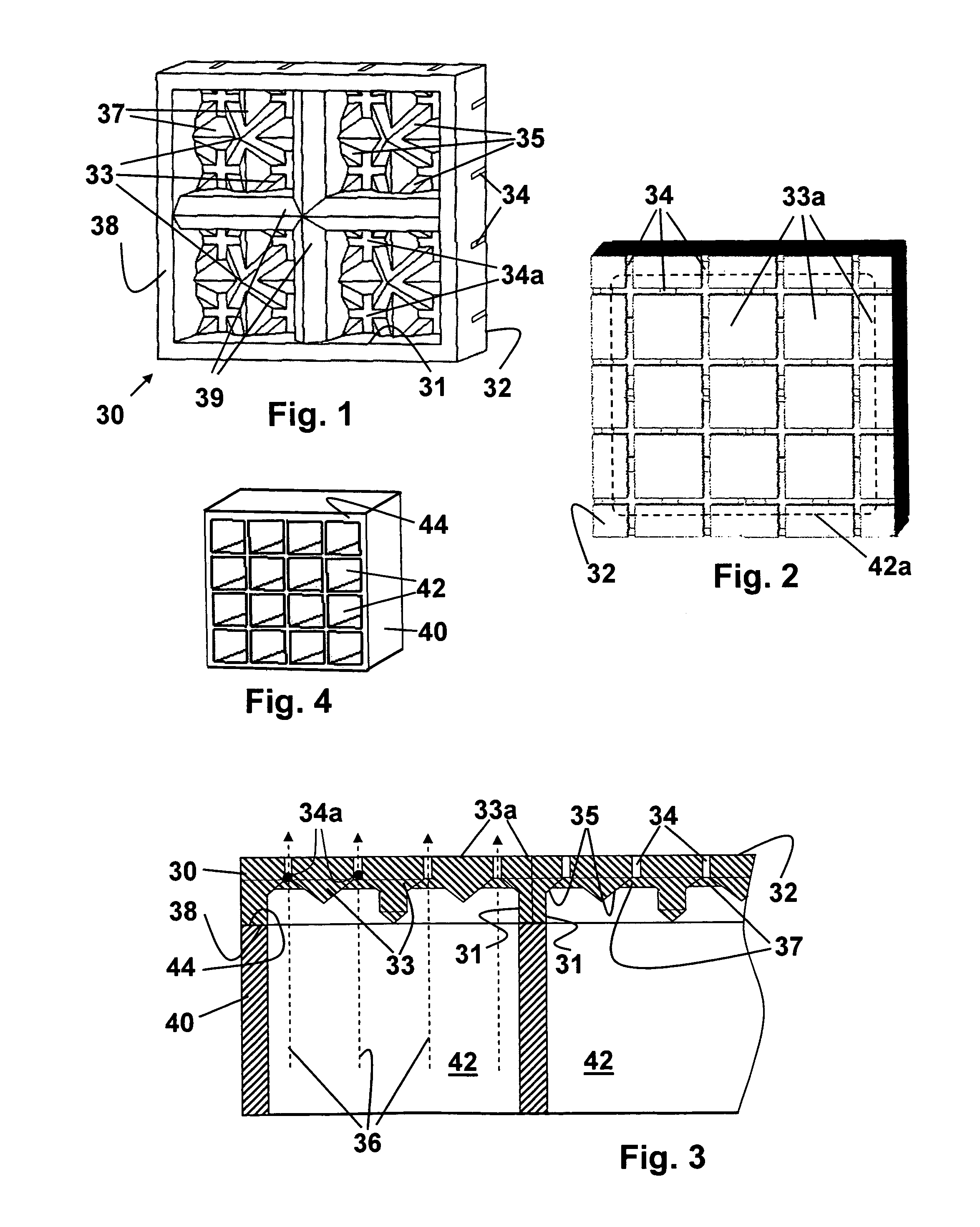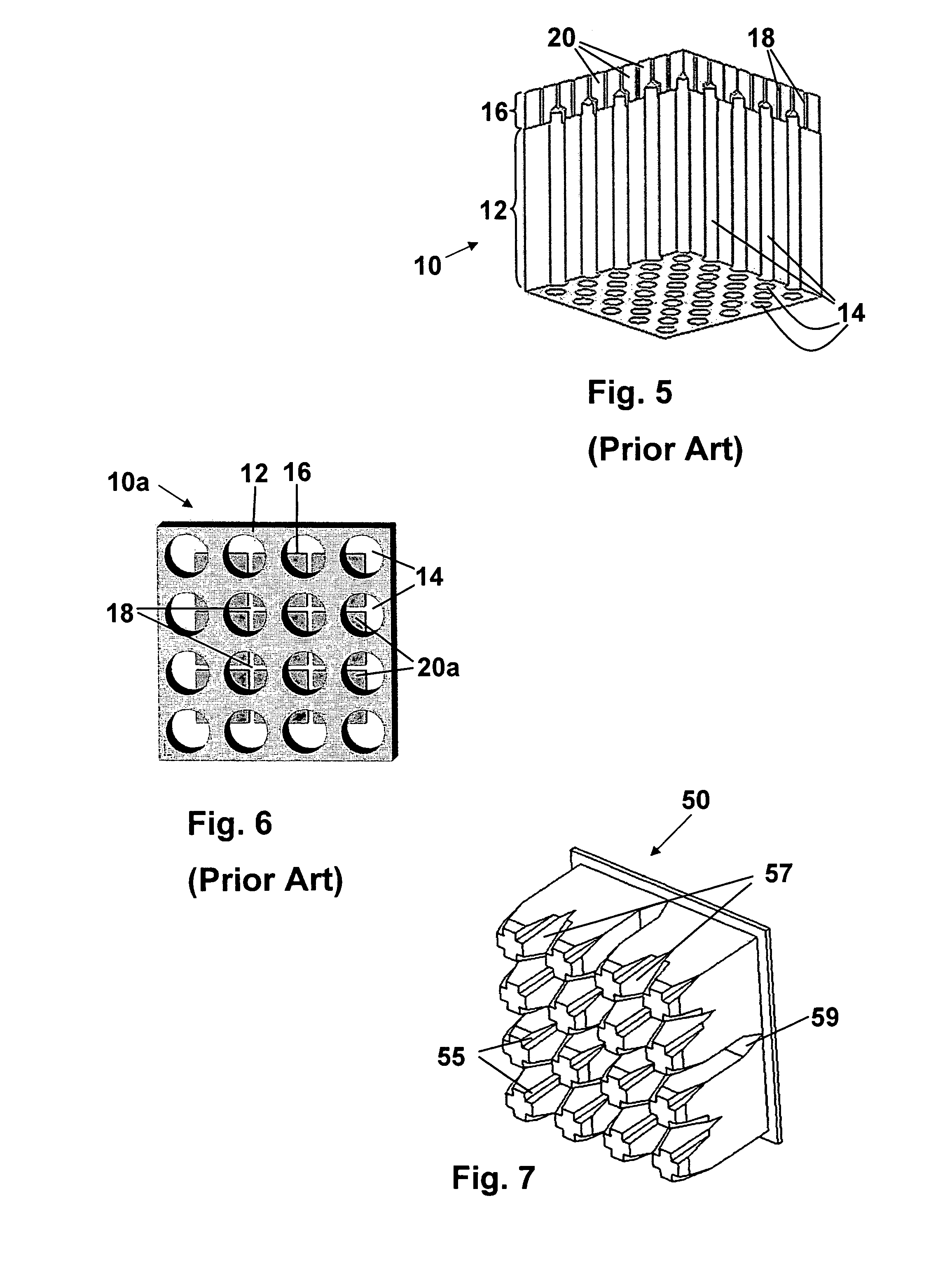Open cavity extrusion dies
a technology of extrusion dies and cavities, which is applied in the field of open cavity extrusion dies, can solve the problems of die design, significant higher die fabrication cost, and clogged passages in the dies
- Summary
- Abstract
- Description
- Claims
- Application Information
AI Technical Summary
Benefits of technology
Problems solved by technology
Method used
Image
Examples
example 1
Honeycomb Die Construction
[0051]A 5 cm-thick billet of solid tool steel is selected for use as a cavity plate in a two-part honeycomb extrusion die. In order to provide extrudate feed channels in the plate, an array of pilot holes of approximately 3 mm diameter is first drilled through the billet using mechanical drilling. Thereafter the array of pilot holes is converted to a close-packed array of feed channels of rounded polygonal (square) cross-section by inserting a wire through each pilot hole and routing out each feed channel by wire electrical discharge machining (EDM). The feed channels thus provided are rounded square holes approximately 4.285 mm on a side at a center-to-center channel spacing of about 5 mm.
[0052]A 2.5 cm-thick billet of tool steel is selected for use to fabricate a honeycomb forming plate for the two-part die. Extrudate transfer openings are first formed in one surface of this plate by plunge electrical discharge machining (EDM). An EDM electrode suitable f...
PUM
| Property | Measurement | Unit |
|---|---|---|
| Fraction | aaaaa | aaaaa |
| Size | aaaaa | aaaaa |
| Shape | aaaaa | aaaaa |
Abstract
Description
Claims
Application Information
 Login to View More
Login to View More - R&D
- Intellectual Property
- Life Sciences
- Materials
- Tech Scout
- Unparalleled Data Quality
- Higher Quality Content
- 60% Fewer Hallucinations
Browse by: Latest US Patents, China's latest patents, Technical Efficacy Thesaurus, Application Domain, Technology Topic, Popular Technical Reports.
© 2025 PatSnap. All rights reserved.Legal|Privacy policy|Modern Slavery Act Transparency Statement|Sitemap|About US| Contact US: help@patsnap.com



